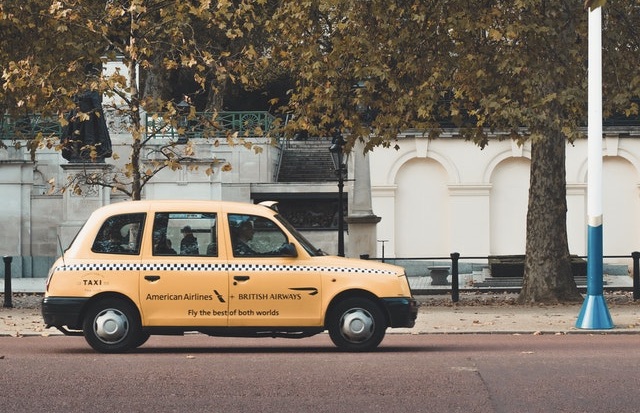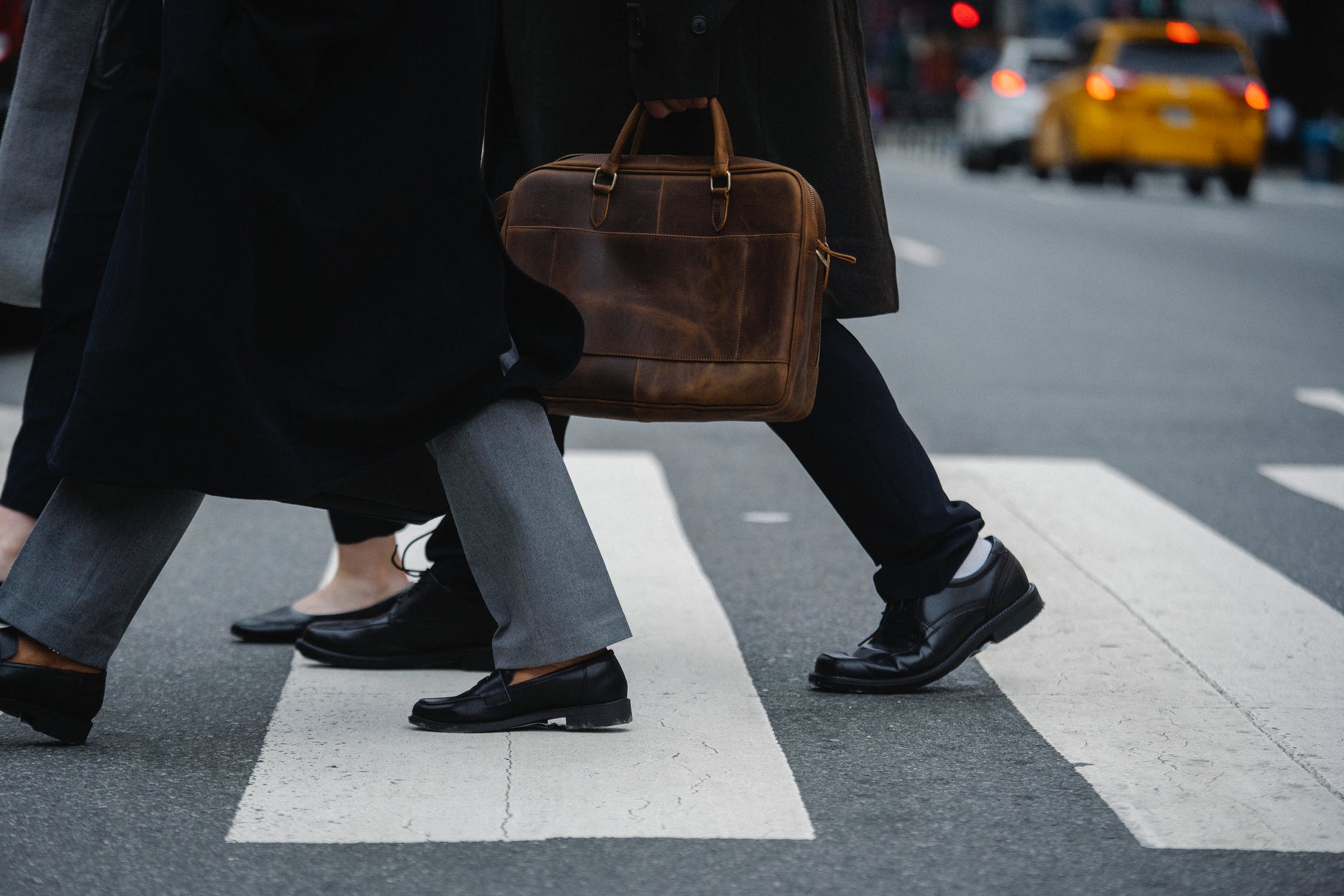It’s critical for drivers to understand the various types of crossing so they can give walkers the right of way when necessary. Furthermore, throughout your driving exam, you may be tested on several crossings. Fortunately, the many crossings are named after animals, making them easy to remember.
Pedestrian crossings exist, making it easier for pedestrians to cross roadways. During your driving test, the examiner will pay close attention to how you approach pedestrian crossings to ensure that you are approaching them safely. Due to the strict requirements of examiners, learner drivers are frequently caught out on pedestrian crossings during the driving test, and it is a regular reason for failure.
In this post, we’ll go over the different types of crossings in UK you can see, as well as how to approach them effectively to help you pass your driving test. Moreover, taking our Theory Test Practice is also an effective way to get familiarized with the actual test and then pass your exam the first time.

Pegasus crossings
Equestrians can ride their horses across the road next to people using a pegasus crossing (also known as an equestrian crossing). The appearance of an equestrian/horse on the control panel will indicate if it is a pegasus crossing. There are also two control panels, one for pedestrians at standard height and the other for mounted equestrians two meters above the ground.
What are the best practices for pedestrians and equestrians while approaching a pegasus crossing?
At a pegasus crossing, horse riders are not required to dismount in order to cross. They should keep a safe distance from the road after pressing the button before crossing. The horse and rider should remain in the enclosure until the person/rider light signal turns green, signaling that it is safe to cross. When crossing the road, stay to one side of the road and be alert of other road users, whether they are walking or riding.
How do you approach a pedestrian crossing?
Drivers should obey the regulations of the road and come to a complete stop when a red light appears and proceed when the signal turns green. Drivers should avoid driving quickly, revving their engines, or sounding their horns needlessly in areas where large animals may be disturbed.
A pegasus crossing can be controlled by a pelican or a puffin, and cars should proceed when the light is green and the road is clear. If the light is red, they must stop, and if the light is flashing amber and the road is free, they must proceed with care.
Maybe you care about Speeding Fines In The UK
Pelican crossings
The pelican was initially introduced on UK highways in 1969 as a Pelican crossing (a blended abbreviation of PEdestrian LIght CONtrolled). It has traffic signals for drivers and pedestrians, as well as a push-button on either side of the road. The crossing is 2.8 meters wide by default. Pedestrians touch a button on the side of the crossing, and the traffic lights change from green to red after a short time, signaling drivers to come to a complete stop.
It is safe to cross when a green walking person symbol replaces the red stationary person symbol on the other side of the road. After a certain length of time, the green person will begin to flash. This will be timed to coincide with a flashing amber light for cars signaling that the crossing is clear. New pelican crossings should not be built on public roadways, according to the Department of Transportation’s Traffic Signs Regulations and General Directions, which were amended in 2016. While thousands of pelican crossings still exist across the country, the majority of new crossings are puffins, with a few outliers where nearside signals are unsafe.
How do you cross a pelican crossing?
Approach the crossing and push the button on the post-mounted control panel. Once the button is pressed, the panel should light up in amber and display the word ‘wait.’ The pedestrian should next glance across the road, where a red stationary person is indicated by a light signal.
Check that traffic has stopped before crossing the road after the light turns to a steady green person. The green guy will begin to flash once a certain amount of time has passed. You should cross to the opposite side of the road if you are already crossing. You should not cross if the green person is flashing when you arrive. Instead, press the button and wait for the cycle to begin again.
What must a driver do at a pelican crossing?
The traffic lights at a pelican crossing should be treated like any other traffic signal. They should proceed with caution, slowing down when an amber light appears, and stopping when the light becomes red. Drivers can advance only if there are no pedestrians on the crossing when the amber signal begins to flash. If a pedestrian is crossing the road when the lights are flashing, the motorist should wait until the pedestrian has crossed to the other side of the road before proceeding.
Read more: The Comprehensive Guide To Tax Credits
Puffin crossings
A pedestrian crossing is known as a puffin crossing or a pedestrian user-friendly intelligent crossing. Puffin crossings, like pelican crossings, make the traffic signal turn red while permitting people to cross the street. Puffin crossings, on the other hand, include sensors that identify delayed crossing pedestrians and extend the red traffic signal as needed.
The request would be canceled if a pedestrian pressed the cross button and then walked away because of the sensors.
Puffin crossings feature two sensors: pedestrian crossing detectors (PCD) and pedestrian curb detectors (PKD).
How do you cross a puffin crossing?
When approaching the puffin crossing, pedestrians should press the button and wait for the green person symbol to show. While pedestrians will not be able to see the green person on the other side of the road, cars should not continue until everyone has completed the crossing, owing to sensors. Pedestrians should cross only when a green person is visible.
What should drivers do if they come across a puffin crossing?
Drivers should approach the lights with caution, since they may change from green to red at any time, especially if they observe someone waiting to cross. A puffin crossing does not have a flashing amber phase due to the sensors; instead, red and amber are shown, indicating that cars should prepare to go once the lights have turned green and the crossing is clear.
Toucan crossings
A toucan crossing is built for both walkers and bikes and is named for the fact that two may cross (and the Department of Transportation is creative). These are typically located along bike paths, and unlike other pedestrian crossings, mounted riders are permitted to use them. It works on the same principles as the puffin crossing and frequently has two sets of buttons: one for pedestrians and another for mounted riders at the proper height. The pictograms will now include a bicycle in addition to the red and green people. A toucan crossing is broader than a puffin or pelican crossing at 4 meters since numerous streams of traffic may cross the road.
Can you cross a pedestrian crossing on a bike?
Cyclists must come to a complete stop and press the appropriate button. On the opposite side of the pedestrian button, cyclists may have their own button installed on a pole. When road traffic has the right of way, a red bicycle light will appear next to a red person. It is safe to cross when the green person/bike is lit. Bicyclists, unlike at other crossings, can remain mounted on their bikes while crossing. Both bikers and pedestrians should cross in a straight line and avoid crossing paths to ensure a safe crossing.
What is the best way for cars to approach a toucan crossing?
A toucan crossing can be patterned like a pelican or puffin crossing, and cars should proceed when the light turns green, and the road is clear of obstacles. If the light is red, they must stop, and if the light is flashing amber and the road is free, they must proceed with care.
You can try to visit our blog to get more information about How To Check Driving Licence Points In The UK?
Zebra crossings
A zebra crossing, which resembles a zebra’s coat, is a pedestrian crossing that allows people to pass without the need for traffic signals. At a zebra crossing in the United Kingdom, all cars and road users must give way to pedestrians or face a fine and license penalty points.
Drivers must pay attention to the zigzagged crossing and slow down or halt when pedestrians are present due to the lack of traffic lights.
At a zebra crossing, how do people cross?
The only crossing where the pedestrian has the right of way once they have stepped out is a zebra crossing. The Highway Code instructs pedestrians to give cars plenty of time to observe them before crossing, and to stay watching while crossing in case a vehicle tries to pass a stopped vehicle. If the crossing is split in half by an island, each half should be classified as a separate crossing with the same regulations applied.
What is the best way for a driver to approach a zebra crossing?
Drivers should be able to notice the crossing ahead of time thanks to the Belisha beacons. They should proceed with caution and be aware that traffic may come to a halt if cars approach the crossing stop to allow someone to pass. Before driving off from a stop at a crosswalk, cars should allow any pedestrians to cross to the opposite side.

What if there is no crosswalk?
While there are some places where pedestrians are not permitted, such as highways, there is no rule in the United Kingdom prohibiting jaywalking, and individuals are free to cross anywhere they like. The Green Cross Code is a section of the Highway Code that provides precise recommendations for pedestrians crossing roadways. It consists of five phases to enable adults and children to cross roads safely. Pedestrian refuge islands, which are elevated sections of pavement between two lanes of traffic traveling in opposing directions, are prevalent in areas where pedestrians cross often but there isn’t enough pedestrian traffic to justify the price of a pedestrian-controlled crossing.
Normally, yellow and white plastic bollards with a blue arrow advise cars to keep left on the Islands. Kerbs are dropped on both sides of the road, most often with tactile paving that slopes towards the road. On Refuge Islands, pedestrians are allowed to stop in the center of the road, dividing the crossing into two sections, one for each direction of traffic.
Advantages
- Pedestrians can cross the street more easily than when there is no crossing
- Because the space is only required in one direction of traffic, it may help pedestrians cross the road more quickly
- In comparison to other crossing designs, this one is the cheapest. For example, puffin and zebra crossings
- Pedestrian refuges limit the road, potentially slowing down automobiles.
Disadvantages
- There is no priority for pedestrians. Motor vehicles take priority, and pedestrians should wait until there is a safe gap in the traffic before seeking refuge in the road’s center
- In comparison to a zebra or puffin crossing, pedestrians may have to wait much longer for a gap in vehicle traffic to cross safely. When there is a lot of traffic, this will happen
- In order to cross safely, pedestrians must be able to estimate motor vehicle speeds and gaps in traffic
- Refuge Island may be more difficult to utilize for visually impaired persons or those with other disabilities than a zebra or puffin crossing
- When a bike is traveling across a crossing island, some motorists behave in an unsafe way. When passing the crossing island, they may squeeze by the bike or veer dangerously around the rider immediately before the crossing island. This behavior might make cyclists feel quite uneasy.
You may be confident in your driving exam now that you are aware of the different types of crossings in UK and how to behave when you come across them. Remember that these crossings are intended to provide a safe crossing for pedestrians, so always approach them with caution.
Home seo content
September 6, 2022

How To Check Driving Licence Points In The UK?
Driving licence points is a problem that you need to be concerned about during the process of maintaining your driving permit. So how to check driving licence points? Find your answer in the below article!
December 31, 2021

Speeding Fines In The UK: What You Need To Know In 2025
You want to drive across the UK but still wonder about being fined for speeding? In this article, we will provide you with beneficial information about speeding fines.
December 31, 2021

